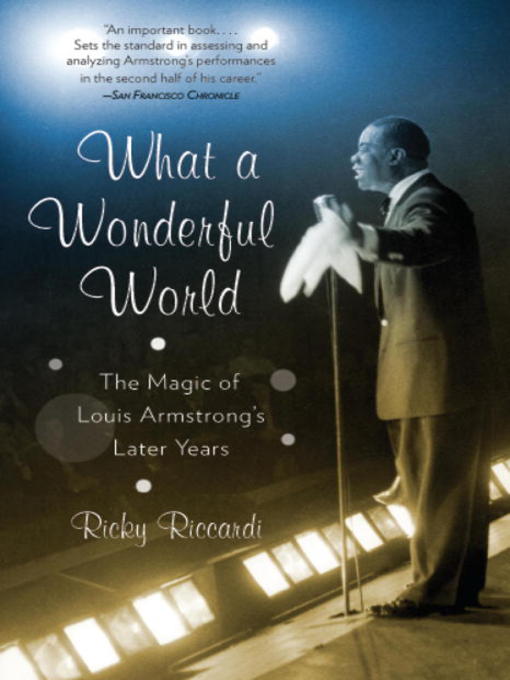In this richly detailed and prodigiously researched book, jazz scholar and musician Ricky Riccardi reveals for the first time the genius and remarkable achievements of the last 25 years of Louis Armstrong's life, providing along the way a comprehensive study of one of the best-known and most accomplished jazz stars of our time. Much has been written about Armstrong, but the majority of it focuses on the early and middle stages of his career. During the last third of his career, Armstrong was often dismissed as a buffoonish if popular entertainer. Riccardi shows us instead the inventiveness and depth of his music during this time. These are the years of his highest-charting hits, including "Mack the Knife" and "Hello, Dolly"; the famed collaborations with Ella Fitzgerald and Duke Ellington; and his legendary recordings with the All Stars. An eminently readable and insightful book, What a Wonderful World completes and enlarges our understanding of one of America's greatest and most beloved musical icons.
- Available now
- New eBook additions
- New kids additions
- New teen additions
- Most popular
- Try something different
- See all ebooks collections
- Available now
- Books to Movies on Audio
- New audiobook additions
- New kids additions
- New teen additions
- Most popular
- Try something different
- Thrilling Listens
- Road Trip!
- Always Available Audiobooks
- See all audiobooks collections


